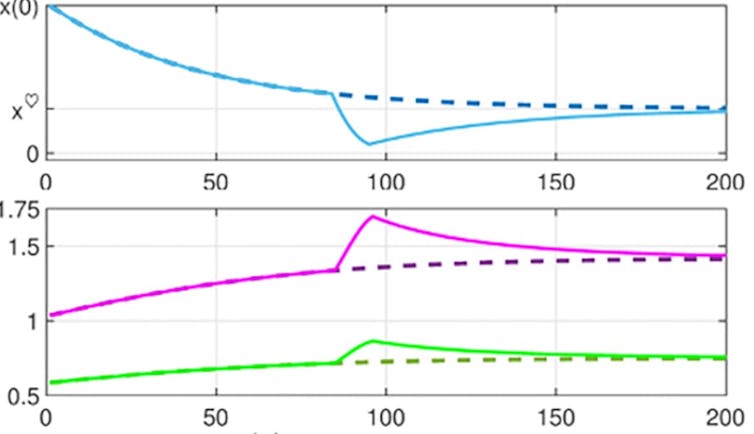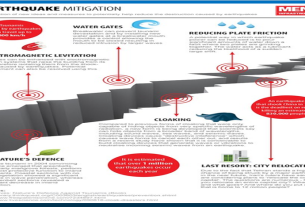|
Getting your Trinity Audio player ready...
|
French director Justine Triet’s Anatomy of a Fall, winner of the 2023 Oscar for best original script, reconstructs a fatal fall in order to dissect the collapse of the romantic relationship between the film’s leading couple, Sandra Voyter and Samuel Maleski.
Far from an exception, breakups of the sort depicted in the film are commonplace: global data shows high levels of marriage failure, with a marked increase towards the end of the last century.
In some Western countries, as many as 50% of marriages do not make it past 25 years, giving rise to the popular maxim “half of all marriages end in divorce”.
According to Triet, “the strange thing is for a relationship to work. The majority are hellish, and the film aims to go deep into that hell.”
Importantly, divorce statistics do not account for the number of relationships that are unhappy. Perhaps the majority are indeed hellish, but some marriages today are long-lasting, and seem stronger and more loving than any that came before. This dichotomy – widespread failure or exceptional success– seems to summarise the current state of marriage in the West. This has been dubbed the “all or nothing” marriage.
Supplying relationship energy
Scientific studies have established that romantic relationships tend to drop off, meaning that, on average, satisfaction levels reduce over time. Successful couples are able to arrest this fall, finding a satisfying level that can last indefinitely. Many others, however, gradually decline to the point where breaking up is only a matter of time.
Relationship psychology shows that love alone is not enough to keep a couple together –it requires effort. Relationship scientist John Gottman likens this to the second law of thermodynamics, whereby a closed system – such as a marriage– degenerates unless energy is supplied. As he puts it, “if you do nothing to make things get better in your marriage but do not do anything wrong, the marriage will still tend to get worse over time”.
The “all or nothing” theory therefore suggests that successful relationships require a significant investment of time and energy. Couples who make this commitment will be rewarded with a high level of satisfaction, while those who fail to do so, like Samuel and Sandra in Triet’s film, are destined to fail.
But why do some couples manage to stop this fall and stay happy? Like Samuel and Sandra, all couples start out in love, and want to be happy together forever. If we assume that they are compatible and willing to make the effort together, they form what some call an “Adam and Eve” relationship – the Biblical archetype of a harmonious, lasting union.
Analysing the “Adam and Eve” relationship
Using dynamic systems to analyse this relationship model confirms the “all or nothing” theory.
Dynamic systems are a mathematical tool for understanding the evolution of a variable over time. In the case of romantic relationships, we are interested in the “feeling” of love in a couple. Because effort is needed to sustain the relationship, it becomes a dynamic system controlled by effort: effort regulates “feeling”, with the objective of making the “feeling” last forever.
By applying this effort control theory, our research has found that a successful relationship requires effort beyond the partners’ preferred level, and that this effort gap is difficult to sustain over time.
The mathematical anatomy of a fall
As Sandra Voyter says in Triet’s film, there are times when a relationship is chaotic, others when you fight alone, sometimes alongside your partner, and sometimes against your partner.
Samuel and Sandra’s relationship has elements in common with any other couple’s relationship. The starting point is very high: “feeling” is at its peak, and there is a shared belief that it will never end. Both are willing to contribute to the happiness of the relationship by making their own individual efforts, and both know that some kind of shock or external event will eventually alter this state.
Generally speaking, couples with the same socioeconomic, cultural, or religious background – known as homogamous couples – are more stable. Many couples, however, are heterogamous, meaning they differ in one or more of these regards.
Heterogamy can extend beyond an individual’s circumstances: on its most elemental level, it can boil down to a mismatch or imbalance in how efficient one member of a couple is in transforming effort into “feeling” or happiness. Such a disparity may lead to asymmetrical levels of effort being dedicated to making the relationship successful, which are already higher than those both members would prefer to make.
This is the case in Samuel and Sandra’s relationship: at one point in the film Samuel highlights this imbalance, and Sandra replies that she does not believe a couple should make equal efforts, saying she finds the idea depressing.
Who contributes more?
Our latest computational models for assessing the dynamics of imbalanced effort levels in couples allow us to simulate the evolution of happiness in a relationship, both in predictable environments and with varying levels of uncertainty. Our simulations suggest that Sandra is right: each partner does not have to make the same level of effort.
One of the film’s scenes – where Sandra and Samuel reproach each other for the efforts made or not made to sustain the relationship – displays typical negative couple dynamics, where each has a bone to pick. The film also implies that Samuel has made or is making more effort than Sandra in their relationship. Our analysis shows, perhaps surprisingly, that the more emotionally efficient partner has to make a greater effort to sustain the relationship. In the film, it appears that this is Samuel.

Image taken from Fig. 5 in J. Herrera y J.-M. Rey (2021) Plos One 16(12): e0260529
External events play a big part
Our analysis also shows that when the couple is subjected to a stressful episode, both partners need to increase their effort levels if the relationship is to survive. However, the more efficient partner’s effort level has to increase more. In the film, Sandra and Samuel’s relationship is subjected to a tremendous misfortune, which has a prolonged and pronounced effect on its narrative arc. This is why Samuel feels much more stressed than Sandra.
Mathematics offers an outcome in line with the film’s plot: the continuous overexertion of the most emotionally efficient partner – amplified by a prolonged period of crisis – leads to the relationship falling apart. In the case of the film, this also leads to Samuel’s fall.



